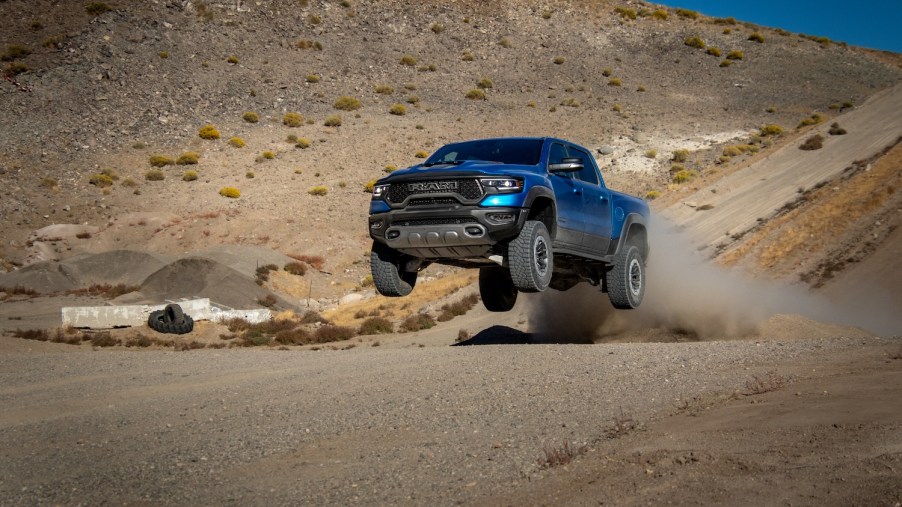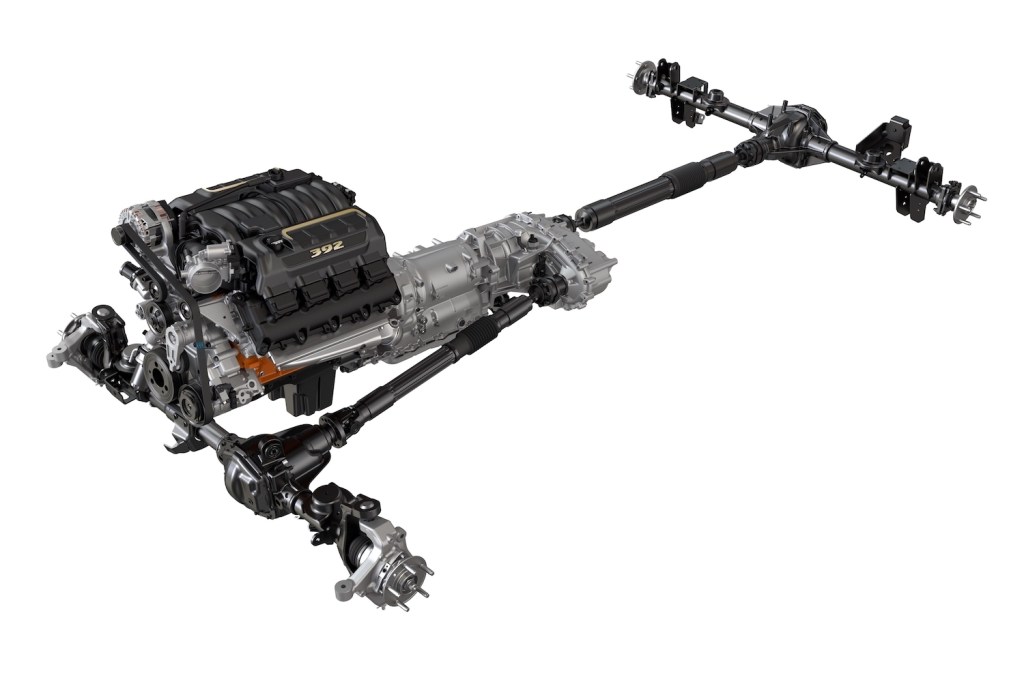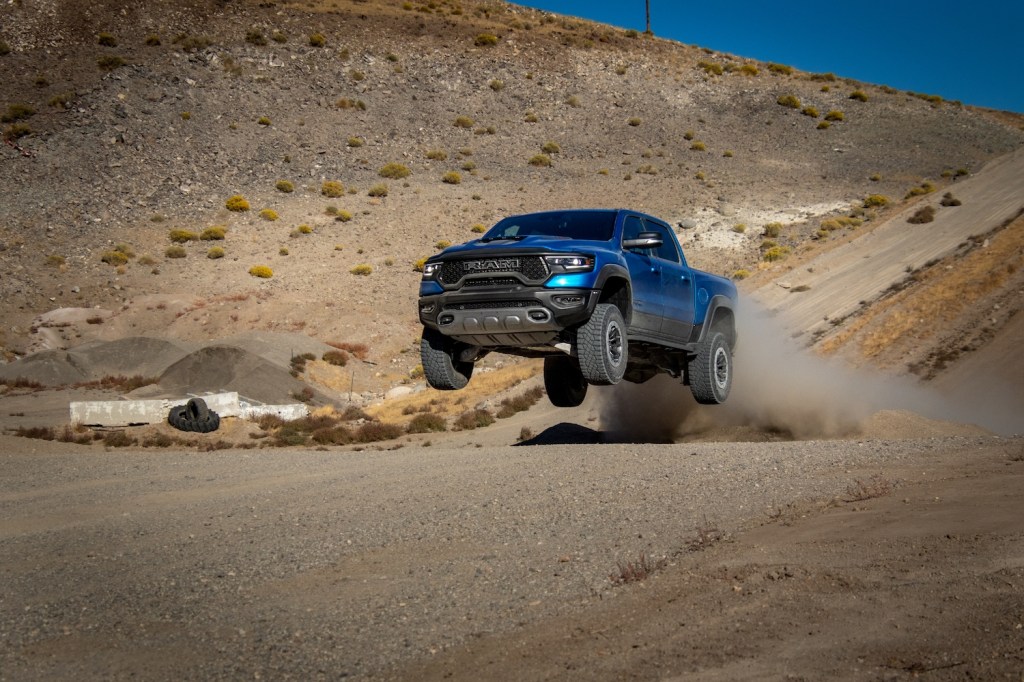
What Is Full Time 4WD?
Some automakers advertise Full Time 4WD drivetrains. How is full time (or permanent) four-wheel-drive different than all-wheel-drive? And is this type of 4×4 better off-road? This is your ultimate guide to full time 4WD.
What is permanent/full time 4WD?
Full time four-wheel-drive is a type of off-road drivetrain. A permanent 4WD vehicle puts power to all four of its wheels, all the time.
Automakers are currently advertising several modern vehicles with full time 4WD. These include some Jeeps and off-road trucks such as the Ram 1500 TRX and Ford F-150 Raptor. These vehicles have no 2WD mode, so they are in 4WD…full-time.
Part-time 4WD vehicles allow the driver to select the drive mode. Using either an electronic selector or a shift lever attached to the transfer case. The operator can choose 4Hi, 4Lo, or 2Hi.
In a traditional, part-time 4WD vehicle you can choose 4Lo for 4WD at low speeds for extra torque. You can choose 4Hi to drive faster with 4WD engaged. But because most of these transfer cases force the front and rear axles to spin at the same speed, you need to select 2Hi for high-speed driving with good traction. If you do not, you will be skidding your front or rear tires around every corner.
How is full time 4WD different than AWD?

Engineers invented a center differential to make the modern, all-wheel drive drivetrain possible. This differential in the transfer case allows the front and rear wheels to move at slightly different speeds. This technology led to the influx of available AWD cars.
Today, some manufacturers of traditional trucks and SUVs are incorporating a center differential into their transfer cases. Because of this, some off-road-ready trucks and SUVs do not even have a 2Hi option. Automakers are advertising these vehicles as full time 4WD. But what’s the difference between full time 4WD and AWD?
The truth is that there’s no official definition of the differences between AWD and full time 4WD. The members of the World Automotive Congress met in 2000 to define these emerging drivetrain technologies. This Congress defined full-time 4WD and AWD as a single technology. But in practice, automakers use the terms for different systems.
Currently, most of the full time 4WD drivetrains are in trucks and SUVs that, until recently, had part time 4WD. Most of these vehicles still have a transfer case mode selector, just with no 2Hi mode available. This makes them very different than AWD systems because the driver can choose between 4Hi and 4Lo.
According to J.D. Power, these 4Hi/4Lo modes actually differentiate full time 4WD from AWD.
Differentiating true 4WD systems from nearly all of the other types is the fact that they come equipped with a special secondary “low” gearing ratio for driving very slowly in rugged terrain. Many also feature locking differentials.
J.D. Power
Is full time 4WD good?

Vehicles with full time 4WD are more effective off-road than AWD vehicles. When driving one of these trucks or SUVs you can choose between a high-torque/low-speed mode and a regular torque/speed mode.
A 4Lo mode is excellent for powering through terrain, such as deep mud or snow, that requires extra torque. But it can cause the wheels to break traction on a slippery surface, so its important to have a 4Hi option as well.
Early AWD vehicles had an Achilles heel: their open center differential meant that at low speeds with low traction, one wheel could spin out of control. With all the power going to this wheel, the vehicle could get stuck. A limited-slip differential, and even a locking-differential solves this problem. This is why many AWD cars have limited-slip differentials.
Part time 4WD vehicles avoided this problem: with no center differential at least one of the two axles would always have power and no single wheel could spin out of control. Theoretically, full time 4WD vehicles do not have this advantage. But most full time 4WD vehicles, such as the Ford F-150 Raptor and the Ram 1500 TRX, feature at least one locking differential to keep it moving forward in low traction conditions.
In addition, a full time 4WD vehicle’s drivetrain may need more maintenance than a part time 4WD. Because a full time 4WD vehicle is always driving its front wheels, it may wear out components in its front axle quickly.
Finally, because a full time 4WD vehicle must constantly turn all four wheels, it will use up more fuel than its part time 4WD counterpart.



